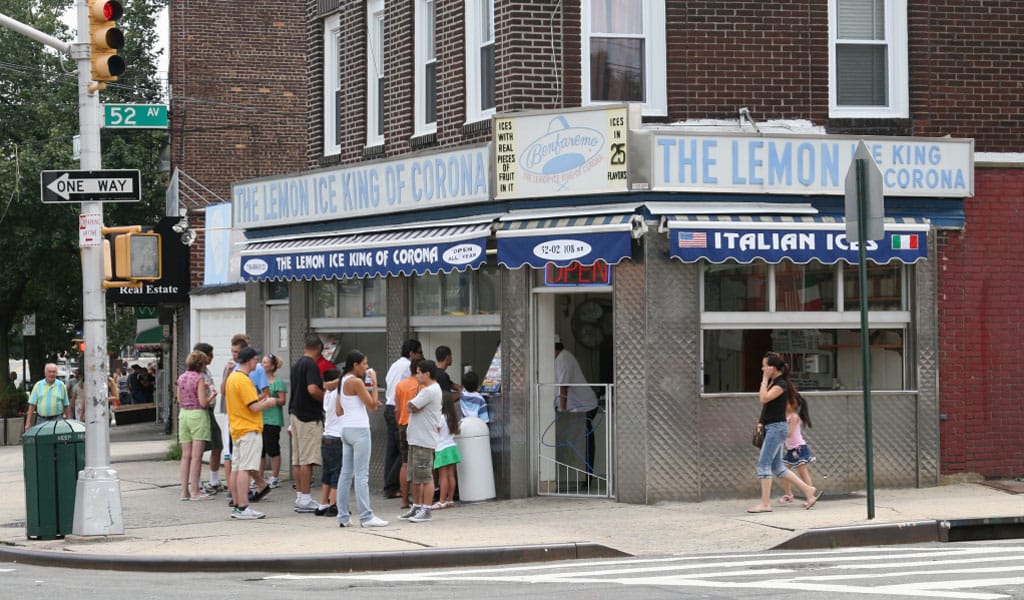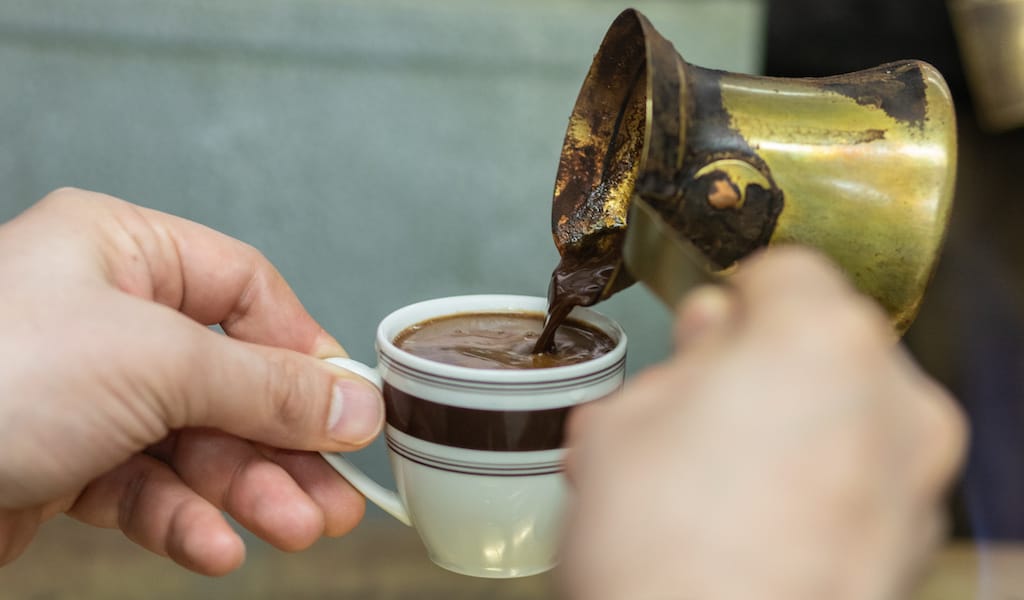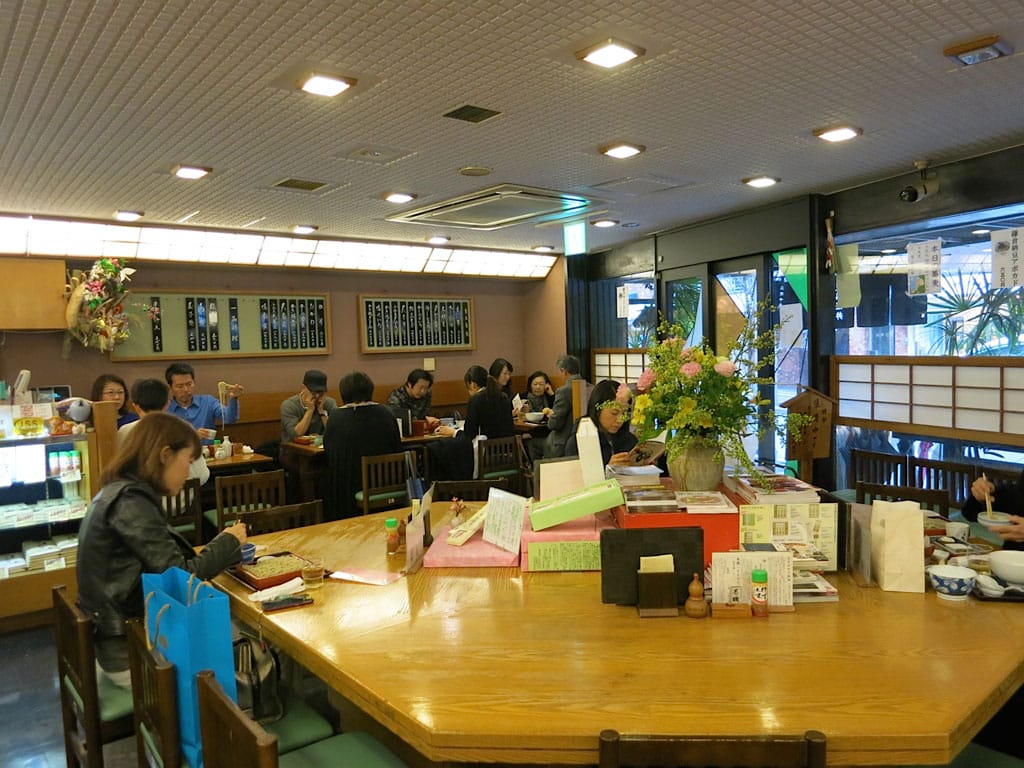Springtime in Queens is a season of promise, particularly the promise that soon, very soon, your cold-weather wardrobe can be stored away till next winter. Often the weather is blustery and unpredictable, so it’s wise to be flexible with your outfit – dress in light layers, carry a mini-umbrella. Provided that you’re also willing to be flexible with your plans — a drizzly day doesn’t have to be a rainout – these two mini-itineraries can help you celebrate the season.
Itinerary one: Temple Canteen, The Hindu Temple Society of North America (the Ganesh Temple), Queens Botanical Garden
An image of the elephant-headed Hindu god Ganesha presides over the Temple Canteen. This cafeteria in the basement-level community center of The Hindu Temple Society of North America, popularly known as the Ganesh Temple, serves some of the best South Indian vegetarian food in all of New York City. Its bill of fare features a score of dosas in various configurations, including an almost comically long paper dosa; when served with potato masala as well as the standard coconut chutney and sambar, it will set you back a mere $7. No item on the dosa menu costs more. Pancake lovers (count us among them) might prefer a denser, disc-like uttapam, particularly the version laced with onion and chilies ($6). Wash it down with masala tea, and, perhaps, pick up some take-away sweets from the counter.
Up the stairs, through a stone passageway and around the corner is the entrance to the temple itself. Like the canteen, it is open to all, Hindus and non-Hindus alike. Shoes, however, must be left outside; shorts, ripped jeans and skirts above the knee are considered disrespectful and are strongly discouraged; photos and videos are prohibited. The camera of your memory must do.
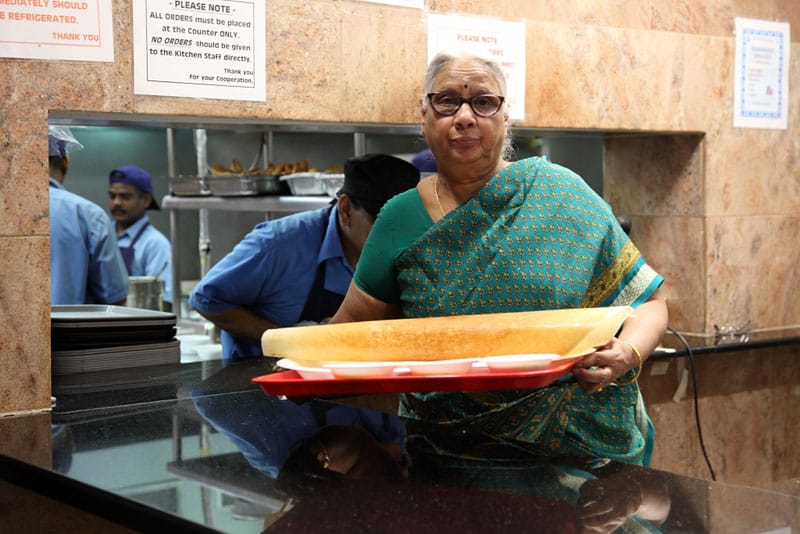
From the temple it’s a 15-minute walk (once you’ve put your shoes back on) to the main gate of the Queens Botanical Garden. Its 39 acres include walkways lined by pines, oaks and magnolias and individual gardens devoted to wetland and woodland flora, to herbs and to flowers just coming into bloom. The garden also hosts many resident and migratory birds; spot the bright breast feathers of the male goldfinch, and you’ll know that sunnier days are here to stay.
Itinerary two: Leo’s Latticini, Mama’s Backyard Cafe, The Lemon Ice King of Corona, William F. Moore Park
For baseball lovers, springtime in Queens also brings the promise of a clean slate and a new season. Loyal fans of the local team, the New York Mets, include the sandwich-making ladies of Leo’s Latticini (AKA Mama’s of Corona). Their celebrated Italian special ($8) takes on all comers at the shop and, when the Mets are home, at nearby Citi Field. Cold cuts and fresh mozzarella are piled high; hot and sweet peppers, mushrooms, and oil and vinegar are added with near-abandon. It’s a big sandwich, and a wet sandwich, good to share and best eaten sitting down. You can always find indoor tables and chairs at Mama’s Backyard Garden, a pastry shop under the same ownership and mere steps away; the outdoor garden is open when the weather is warm.
That pastry case will tempt you, to be sure (cannoli? pignoli? sfogliatelle?), but leave room for the next stop, just down the road. Despite the name, The Lemon Ice King of Corona boasts more than 30 flavors; many sport chunks of the fruit they were made from. This corner shop doesn’t offer tastes and doesn’t mix flavors, but at the grand price of $1.25 for a small, it’s hardly a budget-buster to try one of the more exotic flavors (peanut butter? rum raisin? licorice?), then follow it with a second, palate-cleansing cup of lemon.
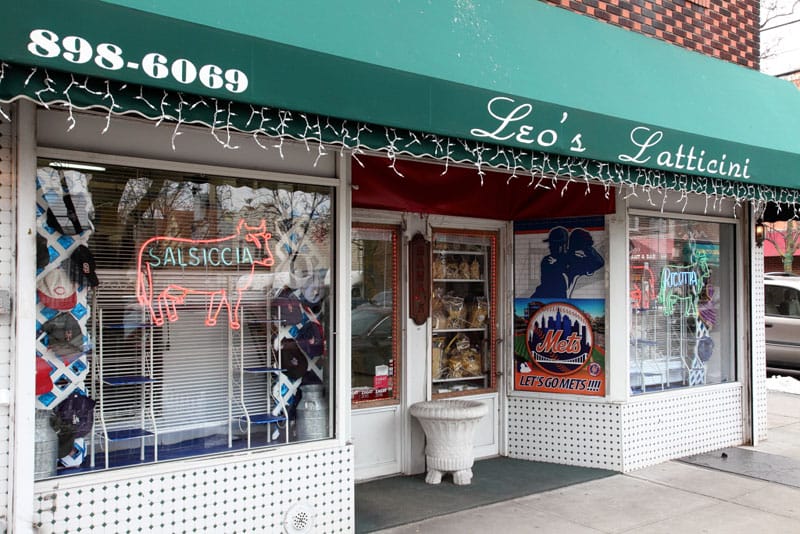
By now, perhaps you’ve caught wind of the goings-on at tiny William F. Moore Park; it’s just within earshot. Jocularly known as Spaghetti Park in recognition of the longtime local Italian-American population, the park has changed with the neighborhood in the decades since World War II. Nowadays the locals are just as likely to be Latino, but the park’s featured attraction endures. Bocce, a leisurely game in which two teams roll heavy balls toward a smaller target ball, often seems as much about conversation and disputation as about the play. From a shaded vantage, in late afternoon, a game of bocce can be almost hypnotically relaxing to watch. You’re unlikely to be anything more than a spectator, however; the court is first-come, first-serve, and many hopeful players are probably waiting their turn. Do you have room for one more ice?
This article was originally published on April 17, 2017.
 June 10, 2021 Bodega La Palma
June 10, 2021 Bodega La Palma
Although the Gothic neighborhood in Barcelona’s Ciutat Vella (“Old City”) district is […] Posted in Barcelona August 16, 2014 Mandabatmaz
August 16, 2014 Mandabatmaz
It’s a dirty secret nobody wants to talk about, but let’s put it out there: finding a […] Posted in Istanbul May 10, 2016 Sarashina Horii Soba
May 10, 2016 Sarashina Horii Soba
How thrilling to know it’s possible to reach far back into Japan’s gastronomic past […] Posted in Tokyo
Published on April 29, 2021
Related stories
June 10, 2021
BarcelonaAlthough the Gothic neighborhood in Barcelona’s Ciutat Vella (“Old City”) district is supported by deep foundations – it’s the site of the former Roman village of Barcino – much of the quarter’s more recent history has been swept away by the rise of tourism. The few remaining old shops and businesses are often in a precarious…
August 16, 2014
IstanbulIt’s a dirty secret nobody wants to talk about, but let’s put it out there: finding a good cup of Turkish coffee in Turkey can sometimes be very difficult. Thin and watery, rather than thick and viscous, is frequently the order of the day. This is no small matter, akin to complaining about the quality…
May 10, 2016
TokyoHow thrilling to know it’s possible to reach far back into Japan’s gastronomic past merely by visiting Azabu Juban’s Sarashina Horii Soba for a bit of “living history” in the form of a pleasantly simple meal. The Sarashina cooking lineage stretches back over 200 years and is always evident in the shimmering, high-quality plates of…







































